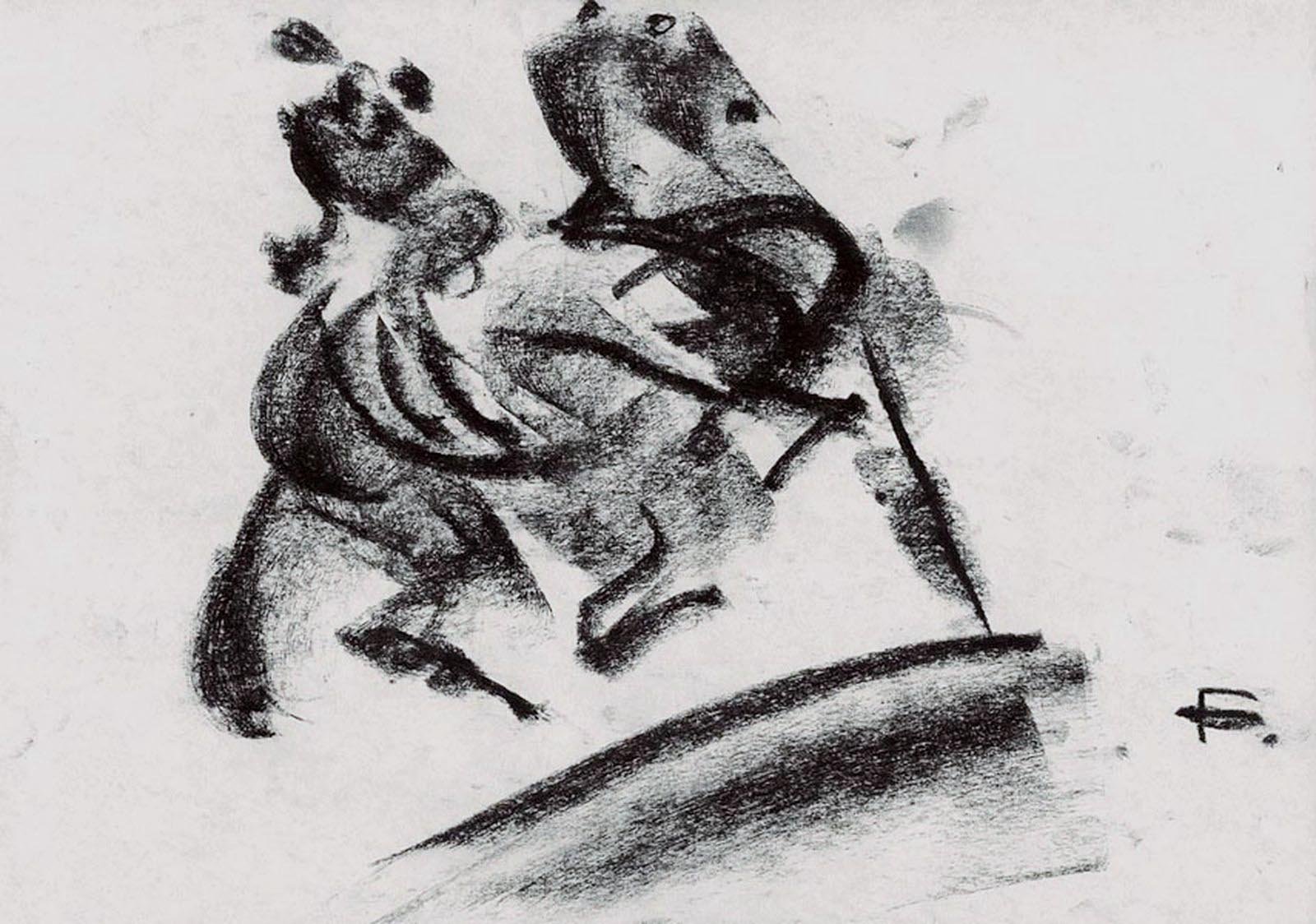Monument To Empress Elizaveta Petrovna
2003
Bronze
675 x 700 x 220 cm (22 ft. x 23 ft. x 7.25 ft.)
City of Baltiysk, Russia
Franguylan’s monument to Empress Elizaveta Petrovna, the second eldest daughter of Peter the Great, sits on a pier that extends from a spit into Gdansk Bay outside of Kaliningrad, a former Hanseatic enclave that was ceded to the Soviet Union in 1946. It was opened in Baltiysk, the former Pilau, where Emperor Peter the Great studied artillery science. In addition to the monument, Georgy Frangulyan designed the entire historical and cultural complex "Elizaveta Fort", the central figure of which is the equestrian statue of the Russian Empress.
The Empress is depicted on horseback, in the dress of a colonel of the Life Guards of the Preobrazhensky Regiment. It is as if she meets all the ships entering the Kaliningrad Bay.
The statue stands nearly 22.5 feet (6.75 meters). In length—nose to tail, tip to tip—measures 22.9 feet (7 meters). The scale of Frangulyan’s monument responds to the challenges of location. The work had “to fit organically into the natural environment”: the beaches of the Baltic Sea, the dunes rising behind them, and the embankment above that.
The sculpture was cast in Kazan. After that, the sculpture was divided into three parts: the horse’s head, the torso of the horse and the lower half of the figure of the Empress, and the upper part of the Empress. The elements were next shipped nearly 800 miles (1,275 kilometers) by truck transport to St. Petersburg, before they were delivered by ferry to the port of Baltiysk, then to the installation site on the northern pier of the strait. The architectural part of the monument had already been prepared. The 12-ton sculpture was then raised by crane and installed.
The monument’s base, which doubles as a museum, is Frangulyan’s nearly faithful rendering of the historic military bunkers that lined the spit on the Baltic Sea. During the eighteenth and nineteenth centuries, twelve brick-and-concrete defensive fortifications were constructed around Konigsberg. Distinctive, elongated hexagonal bunkers were built on the shore as a first line of defense. Frangulyan saw this specific architecture as the most successful way to bind the monument to its history and location.










